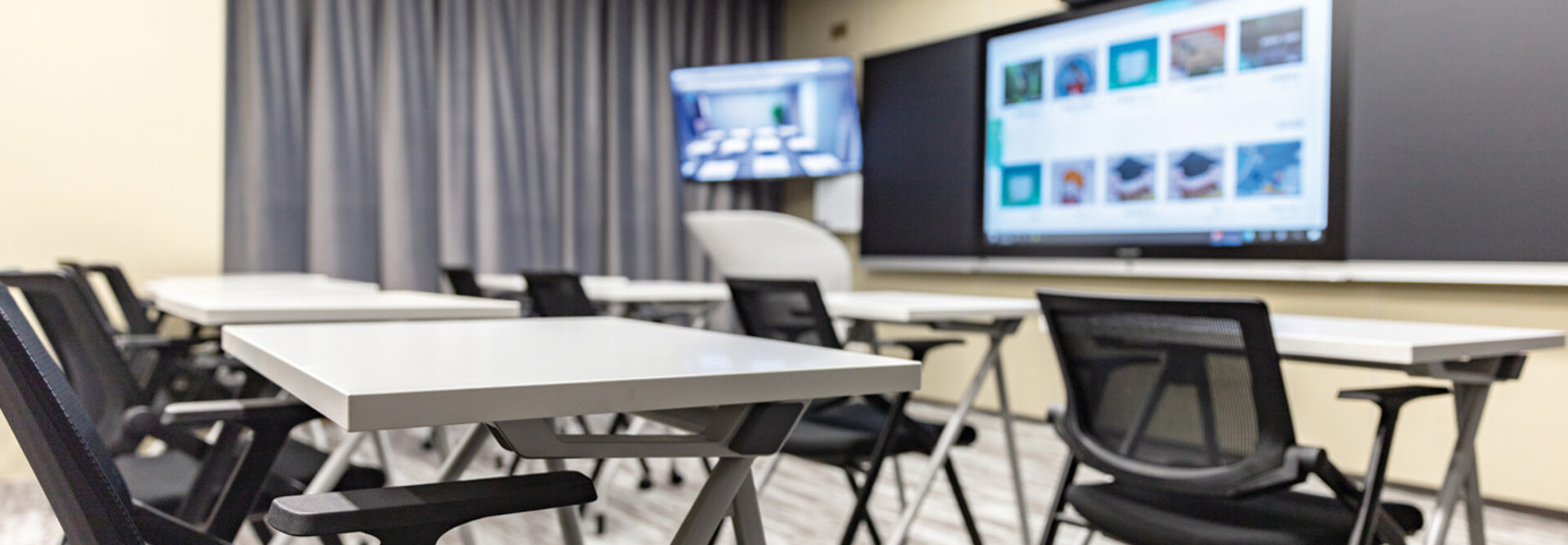Reduce AV Burdens With Simplified Technology
Room AV systems in modern learning environments often require intricate installation processes, including ceiling-mounted components such as cameras, microphones and speakers. Yet, these systems are rarely designed with the technician in mind. Installers frequently navigate tight angles and awkward equipment placement, juggling multiple tools and components without a streamlined setup process. These overlooked installation challenges can slow down deployment and increase the likelihood of errors or inconsistencies across classrooms.
Beyond installation, AV systems commonly include a wide range of hardware that isn’t designed to work together out of the box. Displays, control panels, audio equipment and cameras may come from different vendors and require custom integration, calibration and ongoing support. For AV and IT teams that are already stretched thin, this patchwork approach to AV infrastructure creates long-term operational and financial strain, especially when scaled across dozens or hundreds of rooms.
By contrast, when institutions invest in HyFlex-ready solutions designed to work together seamlessly, they reduce complexity and ease the burden on support teams, making the promise of HyFlex learning more attainable, sustainable and scalable.
The answer? Solutions built for quick and easy installation, designed to work across multiple platforms and equipped with remote update and troubleshooting features. Anything we can do to reduce the number of cords, components and required steps during installation will assist AV staff. Prioritizing user-friendly design will cut down on help tickets across the lifespan of a device, and choosing features such as remote update capability can streamline maintenance. The bottom line is that simplicity and ease of deployment are not nice-to-haves. They are essential.
RELATED: Four exciting benefits of standardizing AV technology in higher education.
Select Technology That Meets Faculty Needs
Higher ed faculty members are in-demand experts on a subject, often on tight schedules and working with limited tech support. They don’t have time for technology that comes with a steep learning curve. Yet, they often find themselves navigating complex interfaces, toggling between controls and adapting their teaching styles to accommodate the limitations of the technology. Or, worse, they don’t use the tech at all, and the result is a subpar learning experience for anyone viewing remotely or asynchronously.
In many classrooms, the most immediate challenge isn’t futuristic technology; it’s the everyday complexity of managing the room itself. I’ve visited universities where instructors are faced with control panels with laminated cheat sheets next to them. These panels are often overloaded, acting as the room system as well, and not designed with simplicity or teaching flow in mind as it relates to capturing and streaming content for HyFlex teaching. It’s a frustrating experience that pulls focus away from instruction and creates unnecessary friction for faculty and support staff alike.
Looking ahead, tools such as auto-tracking cameras hold promise by automating perspective shifts and freeing instructors to move naturally. But even these innovations come with trade-offs, as unpredictable camera movements can be distracting for remote students and disrupt the flow of learning. The key isn’t just adding new technology, but thoughtfully integrating tools that genuinely support teaching and learning without adding complexity.
Faculty members need intuitive interfaces and reliable performance. When AV technology works by simply pushing a button, it fades into the background, and instructors can focus on the most important part of their job (and the one they often find most rewarding): helping students learn and grow.
Click the banner below to sign up for EdTech’s free weekly newsletter.













